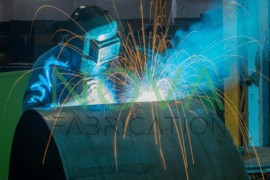Researchers have been exploring new concepts for developing metamaterials.
Metamaterials are small mechanical structures made from one or more basic materials, but the motions possible in the structure exhibit more complex behaviors. A very simple example might be to 3D print a spiral structure – but at the same time creating a “springy” material. The researchers define metamaterials as:
“Metamaterials are artificial materials that derive their unusual properties from their periodic architecture. Some metamaterials can deform their internal structure to switch between different properties.”
Multi-Property Metamaterials
The research, performed at AMOLF in Amsterdam, examined how to control such microstructures in a more precise manner. In particular, they wished to determine if it was possible to create a metamaterial that can exhibit more than a single property.

Their approach was to leverage existing knowledge of origami, the ancient Japanese method of folding paper into complex structures. The researchers used advanced mathematical techniques to study “prismatic multistable 3D building blocks” and developed a method of identifying the multiple stable states of a particular configuration. They explain:
“While a complete description of all possible deformations and stable states is not possible due to the large number of degrees of freedom arising from the elastic description, our method was designed to closely mimic possible experimental implementations of locally actuated metamaterials previously studied for only one prismatic structure. As a result, we are able to shine light on the highly multistable behavior that most of these building blocks exhibit.”
3D Printing Metamaterials
How does this research relate to 3D printing? It’s my belief that metamaterials could be a large portion of 3D printed items in the distant future, simply because it is the only manufacturing technology currently able to do so.
We haven’t seen this happen yet because metamaterials are a relatively new concept and are radically different from traditional materials. So far there have been a number of experiments and research projects such as this one, but few, if any, have made their way yet into actual commercial products.
But they will.
Metamaterial Enabled Products
It’s going to take perhaps a generation for scientists to refine our understandings of metamaterials, engineers to develop products that leverage their properties and entrepreneurs to commercialize those inventions.
For now, few designers know how to make products that make good use of metamaterials, and many will have never even heard of them.
But when that transformation happens, we will see a flood of astonishing new products that were unimaginable in the past.






